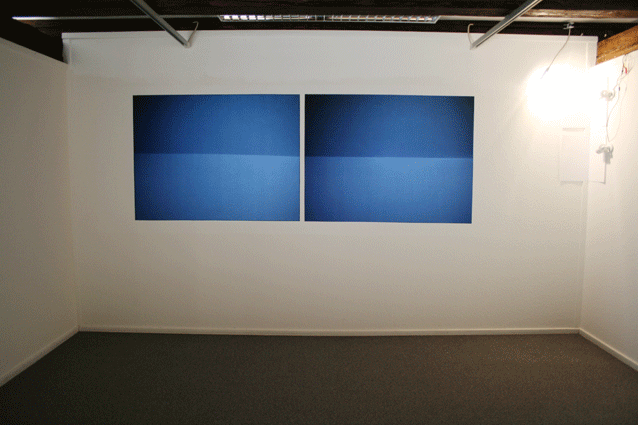Looking at Seeing
The Work of Alexander Steig in SalderAs its least common denominator, probably nothing characterizes Alexander Steig’s work so well as the title of his exhibition at the Kunstraum München in 2011: VISUS VISERE. Even though this three-part video production dealt with control and surveillance and thus thematized political topics that are important to him, it was the Latin title that took it a step further. In German, visus visere could be translated as “Das Sehen betrachten” (Looking at Seeing) and thus it touches on the problem of perception in a very fundamental way. What do we see, when we see something? The question about the appearance of things is an age-old philosophical problem and for the process of seeing, the ability to distinguish between appearance and reality is both an act of knowledge and a moral imperative. Plato’s “Parable of the Cave” bears impressive witness to this.
In the last century, the physicist Hermann von Helmholtz made it clear in his theory of seeing that the eye is not always helpful in the search for truth. On the one hand, von Helmholtz wholeheartedly admires its ability to accommodate, while on the other, he laments its deficits in perceiving—since there are many optical illusions to which it is subject. The eye does not register the world like a camera obscura—as a pure mirror of reality—as was once believed, rather the correct ordering of optical impressions takes place in our brain. And that can be misleading. It is precisely this difference between what we see and what actually is—as a source of possible misunderstandings and errors—that interests Alexander Steig. In his search for truth, he proves to be as artistic as he is political and philosophical.
Alexander Steig’s artworks touch upon the field of perception but also upon the problem of identity, which of course is the topic of the exhibition in Salder. Here, it is important to differentiate between qualitative and numerical identity, a distinction the artist refers to within brackets in the titles of his new pieces. Qualitative identity means, simply formulated, that two or more objects are identical in all of their characteristics and cannot be distinguished from one another. Numerical identity, on the other hand, means that they are in reality one and the same object. This distinction has also interested Steig in earlier works, for example his Corner Surveillance (2019), a closed-circuit installation in which three cameras mounted at differing heights film a right angle inside the Artothek in Munich. Since it is always different segments of the angle that the cameras capture in detail, there is a qualitative identity between them. The first series of images shows the three right angles in daylight, the second series of images the same angles at night. However, they appear completely different to the eye. Since the three cameras have switched to infrared mode in the evening, in order to capture their objects better in the weaker light, the angles now look much brighter. Their contours advance as sharp and physical whereas they were previously only delicate and flat. Yet, the different series of images show the same subject. In an astonishing but logical way, there is a numerical identity between them.
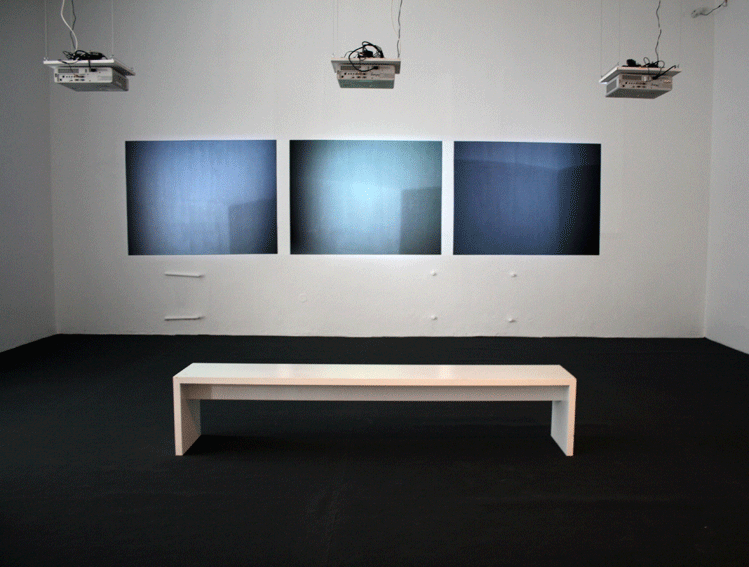
Corner Suveillance, 2019, Artothek, MunichFor Henne und Ei (Hen and Egg) (2017), also an older piece, a camera was pointed firmly at one location inside a chicken coop. But the images it takes of that place—all of which are identical with itself—change. First, we see a hen, then another, and finally two eggs. In the case of such seemingly perfect identity, we’d love to say that things are as alike as one egg to another. But even if the eggs were from one and the same chicken rather than from two, we would still be talking about qualitative rather than numerical identity.
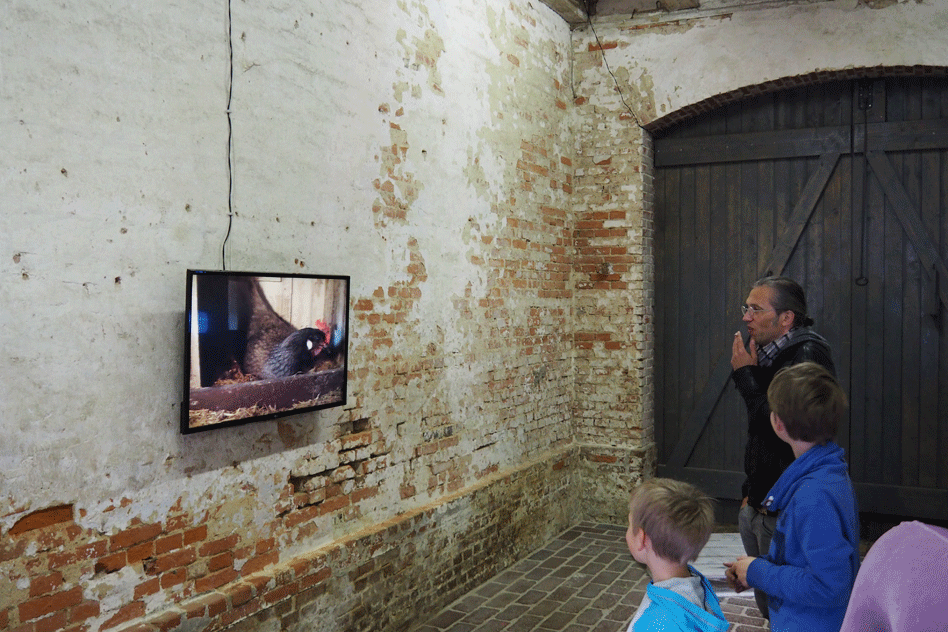
Henne und Ei/(Hen and Egg), 2017, Remise, AxstedtAnd what about Isar-Kiesel (Isar Gravel) (2019), Alexander Steig’s new piece for Salder Salon? It’s one and the same stone, filmed by two cameras from different perspectives, that makes things clear. Numerical identity! And the Kante (Edge) (2019) of a room, also a new piece, which the artist filmed in two different stages so that he could tilt them from the vertical to the horizontal? Qualitative identity! Although the look and feel of the images has fundamentally changed as a result of this intervention. From interior to exterior, from architecture to landscape.
02.gif)
Isar-Kiesel (numerisch)/(Isar Gravel), 2019, Schloss Salder, Salzgitter
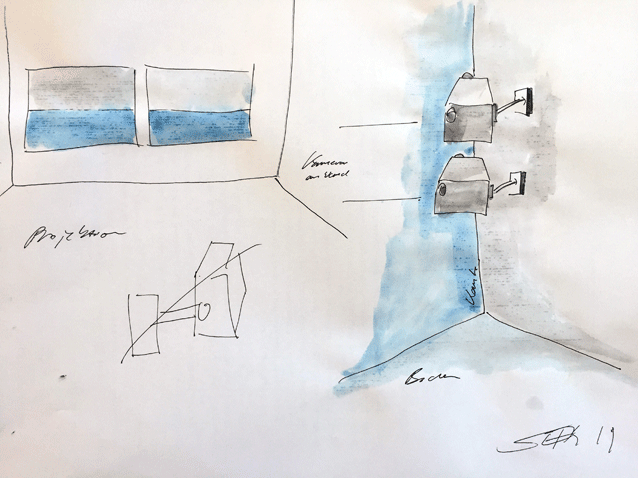
Kante (qualitativ)/(Edge), 2019, Schloss Salder, SalzgitterWith this bravura performance, Alexander Steig light-handedly illustrates Arthur Rimbaud’s canonical diagnosis of Modern identity, one that could not be more political: “I am another.”
Michael Stoeber
Translation: Courtenay Smith, Munich
(Catalogue "Identitäten", Salzgitter)
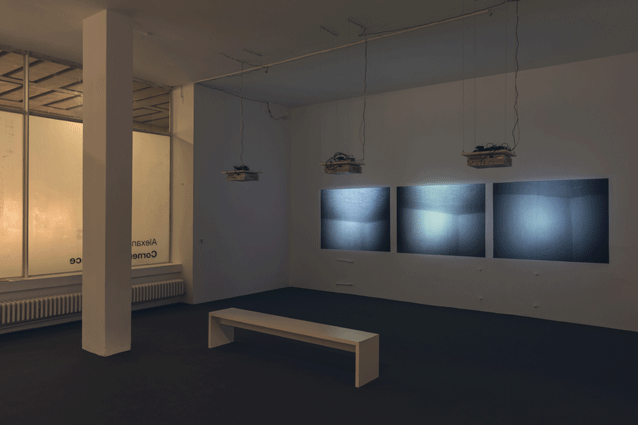
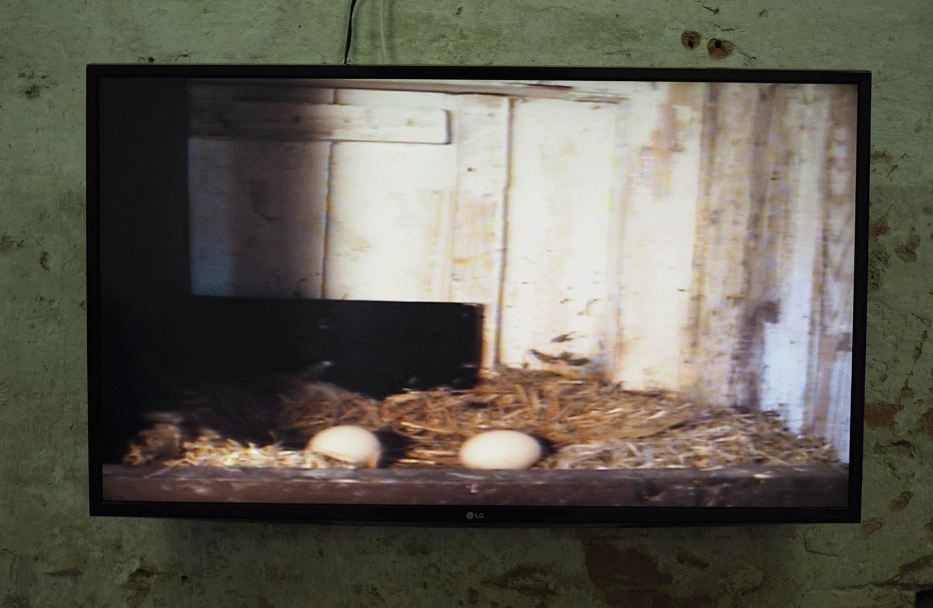
03.gif)
